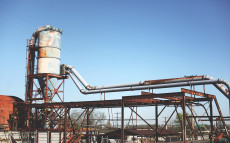- pathfindersAI
- Job Profile
Carpenters
Summary
What They Do
Carpenters are skilled craftspersons who work with wood and other materials to create, install, and repair structures and fixtures. Their work is versatile, ranging from constructing building frameworks and stairways to installing kitchen cabinets and drywall. As integral players in the construction industry, carpenters bring architectural designs to life, ensuring that buildings and spaces meet both structural standards and aesthetic expectations. They work in a variety of settings, including residential, commercial, and industrial construction, and often collaborate with other tradespeople such as electricians, plumbers, and masons to complete projects.
Job Responsibilities
The job responsibilities of carpenters are diverse and vary depending on the job site and project requirements. They read blueprints and technical drawings to understand project specifications and to determine the dimensions and materials needed. Carpenters measure, cut, and shape wood, plastic, and other materials using hand tools and power tools. They assemble and fasten materials to create frameworks, partitions, joists, and rafters, ensuring precise alignment and fit. Additionally, they may install flooring, windows, doors, interior trim, and cabinetry, as well as perform repairs and maintenance tasks. Carpenters are also responsible for ensuring that their work complies with building codes and safety regulations.
Essential Skills
To excel as a carpenter, a variety of essential skills are crucial. Carpenters need strong mathematical skills to measure materials accurately and to understand geometric concepts. Physical stamina and strength are necessary due to the demanding nature of the work, which often involves lifting heavy materials and working in difficult positions. Manual dexterity and hand-eye coordination are critical for using tools effectively and crafting detailed work. Attention to detail is a must, as precision is key in ensuring that structures are built correctly and safely. Additionally, problem-solving skills and the ability to think critically enable carpenters to overcome on-site challenges and to adapt to changes in project requirements.
Educational Pathways
The educational pathways to becoming a carpenter can vary, but typically include a mix of formal education and hands-on training. Many carpenters begin their careers through apprenticeship programs, which combine on-the-job training with classroom instruction. These programs, which can last three to four years, are often sponsored by trade unions or contractor associations and cover a range of topics, including safety practices, carpentry techniques, and blueprint reading. Alternatively, some aspiring carpenters enroll in vocational schools or community colleges that offer certificate or associate degree programs in carpentry or construction technology. Additionally, obtaining a high school diploma or equivalent is generally required, and coursework in mathematics, mechanical drawing, and shop classes can be beneficial.
Career Prospects
The career prospects for carpenters are promising, with steady demand driven by the need for new construction, renovations, and maintenance. According to the U.S. Bureau of Labor Statistics, employment of carpenters is projected to grow as fast as the average for all occupations, reflecting ongoing urban development and infrastructure improvement projects. Carpenters can advance their careers by gaining specialized skills, obtaining certifications, or moving into supervisory roles such as construction foremen or project managers. Some experienced carpenters choose to start their own contracting businesses, offering opportunities for greater independence and potential financial rewards.
Conclusion
In conclusion, carpentry is a dynamic and rewarding career that offers both stability and opportunities for advancement. Carpenters play a vital role in shaping the built environment, using their skills and creativity to construct and maintain homes, offices, and public spaces. Through a combination of hands-on experience, technical knowledge, and continuous learning, carpenters can build successful and fulfilling careers. For those who enjoy working with their hands, solving problems, and seeing tangible results from their efforts, carpentry may be an ideal career choice. As the construction industry continues to evolve, the demand for skilled carpenters is likely to remain strong, ensuring a bright future for those entering the trade.
Video
Compensation
| State | Median Salary | Median Hourly | Positions |
|---|---|---|---|
| AL | 44,480 | 21.39 | 6,080 |
| AK | 62,190 | 29.90 | 2,470 |
| AZ | 50,180 | 24.12 | 14,020 |
| AR | 44,890 | 21.58 | 2,950 |
| CA | 68,380 | 32.87 | 102,870 |
| CO | 57,780 | 27.78 | 15,970 |
| CT | 63,460 | 30.51 | 6,070 |
| DE | 59,770 | 28.74 | 1,450 |
| DC | 63,290 | 30.43 | 1,170 |
| FL | 47,530 | 22.85 | 49,900 |
| GA | 48,740 | 23.43 | 9,010 |
| HI | 82,040 | 39.44 | 5,520 |
| ID | 47,100 | 22.65 | 8,220 |
| IL | 68,400 | 32.89 | 23,990 |
| IN | 55,080 | 26.48 | 14,860 |
| IA | 48,830 | 23.48 | 6,740 |
| KS | 48,520 | 23.33 | 5,390 |
| KY | 50,090 | 24.08 | 7,820 |
| LA | 47,240 | 22.71 | 7,970 |
| ME | 54,920 | 26.41 | 5,080 |
| MD | 57,270 | 27.54 | 9,670 |
| MA | 66,270 | 31.86 | 16,640 |
| MI | 58,260 | 28.01 | 21,400 |
| MN | 62,660 | 30.13 | 16,240 |
| MS | 43,750 | 21.04 | 2,440 |
| MO | 59,030 | 28.38 | 15,290 |
| MT | 50,340 | 24.20 | 4,330 |
| NE | 47,320 | 22.75 | 6,200 |
| NV | 62,600 | 30.10 | 14,280 |
| NH | 58,900 | 28.32 | 3,530 |
| NJ | 69,620 | 33.47 | 13,400 |
| NM | 46,990 | 22.59 | 3,290 |
| NY | 59,830 | 28.77 | 47,740 |
| NC | 46,230 | 22.23 | 14,600 |
| ND | 53,600 | 25.77 | 2,480 |
| OH | 54,520 | 26.21 | 18,270 |
| OK | 46,180 | 22.20 | 4,740 |
| OR | 61,970 | 29.79 | 14,980 |
| PA | 57,200 | 27.50 | 29,270 |
| RI | 61,020 | 29.34 | 3,130 |
| SC | 47,700 | 22.94 | 8,510 |
| SD | 42,480 | 20.43 | 4,320 |
| TN | 48,030 | 23.09 | 9,930 |
| TX | 47,720 | 22.94 | 34,970 |
| UT | 49,570 | 23.83 | 12,920 |
| VT | 58,660 | 28.20 | 3,210 |
| VA | 48,730 | 23.43 | 17,580 |
| WA | 72,110 | 34.67 | 28,690 |
| WV | 45,960 | 22.10 | 2,820 |
| WI | 59,070 | 28.40 | 15,330 |
| WY | 52,000 | 25.00 | 2,540 |
Similar Occupations
In this area you will find other occupations that are close to the one you were viewing in tasks, knowledge and work environment. If the primary job profile you are viewing isn't quite to your liking, take a look around and see what else is available.
Basic and Premium Accounts have more alternative occupations available than the Free account.

Brickmasons and Blockmasons - 47-2021.00
Brickmasons and Blockmasons construct and repair walls, floors, partitions, and other structures with brick, concrete blocks, and other masonry materials. They interpret blueprints, measure and cut materials, and apply mortar or adhesives to create sturdy, aesthetically pleasing surfaces.
-
$59,640/yr
Median Pay -
56,830
Number of Jobs

Cabinetmakers and Bench Carpenters - 51-7011.00
Cabinetmakers and bench carpenters specialize in constructing and repairing wooden cabinets, furniture, and fixtures, often working from detailed blueprints and specifications. They use a range of hand tools and machinery to cut, shape, and assemble wood products to precise measurements and high-quality standards.
-
$43,260/yr
Median Pay -
88,460
Number of Jobs